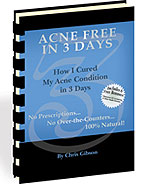|
 Dermabrasion
for Acne Dermabrasion
for Acne
Dermabrasion
refers to the physical removal of the surface of the skin using
cosmetic procedures and friction. In past years, dermabrasion
was done by sanding away the top layer of the skin to remove
sun-damaged skin or help reduce scar tissue and discoloration.
Improvements in technology, however, have given rise to carbon
dioxide and lasers as a way to remove the top layers of skin.
These types of dermabrasion are much more precise and easier
to control than sanding.
Unlike many
other acne treatments, dermabrasion can be painful and usually
requires a general anaesthetic to be applied to the area prior
to the procedure. As a result of the removal of skin, recovery
time can take weeks or even months.
While Dermabrasion
can be severe and take months to heel, Microdermabrasion is
a much gentler, less invasive technique used to exfoliate the
skin. Unlike dermabrasion that removes many layers of skin,
microdermabrasion is designed to remove only the top layer.
This means that the recovery time for microdermabrasion is shorter
and typically a few weeks to a month.
Subcision
Treatments
Subcision
is used to treat acne scars by separating the skin tissue from
the underlying scar, allowing blood to fill the space and rejuvenate
the skin. This allows for the scar to level and the appearance
to decrease. Usually subcision is used in conjunction with microdermabrasion
and laser resurfacing.
Aloe Vera
and other Plants for Acne and Blackheads
The healing
properties of Aloe are known all over the world and are sometimes
used as part of a treatment program for acne. Aloe, Neem, Turmeric,
and Papaya have all been used to treat acne although there is
little medical evidence to support their success. The anti-inflammatory
effects of some of these plants, however, can aid in reducing
certain forms of acne.
Anti-Inflammatory
Treatments
Common anti-inflammatory
drugs such as Naproxen, Ibuprofen, and Calendula have also been
used to help decrease redness and irritation from acne. Most
of these types of over-the-counter drugs are used on mild forms
of acne.
Physical
Removal of Acne
Some individuals
result to physical removal of acne to help resolve symptoms.
While dermabrasion can certainly be considered a physical treatment,
heat and comedo removal also fall under this category. Heat
can be used in localized areas in order to kill the bacteria
that lead to pimple formation. Furthermore, individuals can
physically remove comedos and blackheads through use of adhesive
strips designed to pull the clogged particles from the pore.
Vitamin
B Treatments to Help with Bad Acne
Also known
as Nicotinamide, the topical form of Vitamin B has been proven
to reduce the number of bacteria on the skin. There are both
prescription and over-the-counter forms of Nicotinamide both
of which have anti-inflammatory effects as well as boosting
collagen and keratin in the skin. The products also have proven
to reduce scars and wrinkles and improve skin moisture.
Using Tea
Tree Oil For Acne
A common
anti-inflammatory agent, tea tree oil has been used in acne
patients with a small degree of success. Much like benzoyl peroxide,
tea tree oil also kills acne-causing bacteria but without the
excessive drying.
Check
out Acne Free in 3 Days if you really want to clear up your
face!
Getting
Rid of Blackheads> Acne
Treatments> How to get rid of Blackheads Naturally
|


 Dermabrasion
for Acne
Dermabrasion
for Acne